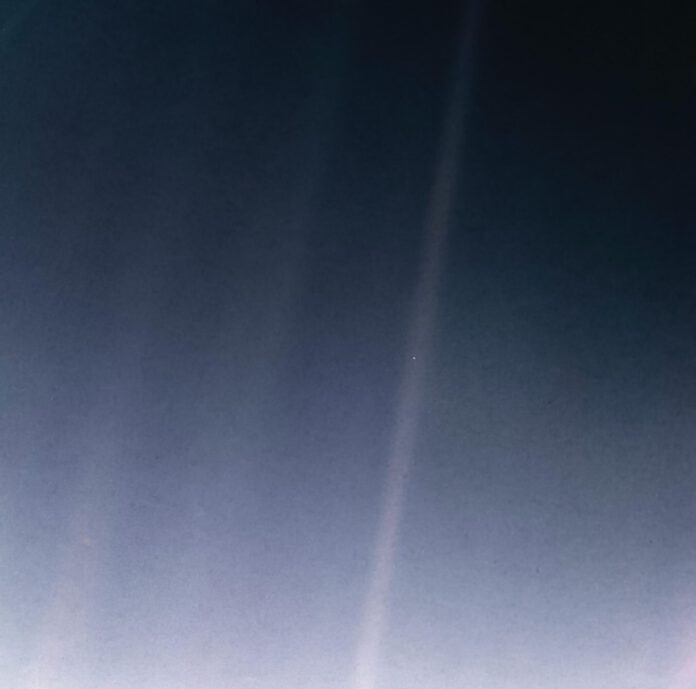
The Iconic Snapshot of Earth from Space
On February 14, 1990, the Voyager 1 space probe captured a photograph of our planet. This iconic image displays Earth as a tiny speck in the vastness of space.
The Journey of Voyager 1
Launched on September 5, 1977, Voyager 1 reached Jupiter a year and a half later. In 1980, the spacecraft journeyed past Saturn. A decade later, Voyager 1 produced its first images from outside our solar system – a family portrait that included Earth. However, it wasn’t quite the grand display one might expect. At a distance of six billion kilometers away, Earth appears as a minuscule dot, no larger than a single pixel. Therefore, no seas or continents can be distinguished in the photograph, resulting in the merged image famously known as the ‘Pale Blue Dot’.
The ‘Pale Blue Dot’ as a Cosmic Perspective
The ‘Pale Blue Dot’ has gained worldwide fame as it illustrates just how tiny our planet is, dwarfed by the vastness of the universe. A distance of six billion kilometers might seem immense, but in the grand scheme of the Milky Way, and indeed the universe, it is virtually insignificant. In 1994, esteemed Astrophysicist Carl Sagan published the book ‘Pale Blue Dot’, reflecting on humanity’s place in the universe. He writes, “











